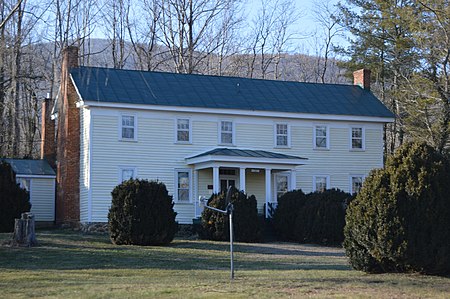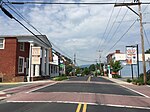Powell–McMullan House
Central Virginia Registered Historic Place stubsGreek Revival houses in VirginiaHouses completed in 1800Houses in Greene County, VirginiaHouses on the National Register of Historic Places in Virginia ... and 1 more
National Register of Historic Places in Greene County, Virginia

Powell–McMullan House is a historic home located near Stanardsville, Greene County, Virginia. The original house was built about 1800 and expanded in 1842. It is a two-story, frame dwelling in a vernacular Greek Revival style. It has a metal-sheathed gable roof, exterior gable-end brick chimneys, and a one-story hipped roof front porch.It was listed on the National Register of Historic Places in 2000.
Excerpt from the Wikipedia article Powell–McMullan House (License: CC BY-SA 3.0, Authors, Images).Powell–McMullan House
McMullen Mill Road,
Geographical coordinates (GPS) Address Nearby Places Show on map
Geographical coordinates (GPS)
| Latitude | Longitude |
|---|---|
| N 38.349166666667 ° | E -78.458055555556 ° |
Address
McMullen Mill Road 272
22973
Virginia, United States
Open on Google Maps





